 W
WThe 3,7 cm KPÚV vz. 37 was an anti-tank gun produced by the Škoda Works that saw service in World War II. Originally designed for the Czechoslovak Army, some were also sold to Yugoslavia. A number were appropriated by the Germans after the German occupation of Czechoslovakia in 1939 and used under the designations 3,7 cm PaK 37 (t). Captured Yugoslav guns were used under the designation of 3,7 cm Pak 156 (j). Slovakia acquired 158 when it declared independence from Czechoslovakia in March 1939.
 W
WThe 3,7cm ÚV vz. 38, manufacturer's designation Škoda A7, was a 37 mm tank gun designed by the Skoda Works in Czechoslovakia prior to World War II.
 W
WThe 3.7 cm Flak 43 was a light anti-aircraft (AA) gun used by Nazi Germany during World War II. It was derived from the 3.7-centimeter (1.5 in) Flak 18/36/37 series of AA guns. It was provided with single- and twin-gun mounts, the latter being designated as the 3.7 cm Flak 43 Zwilling and was in service from 1944 to 1945. In addition to versions used by the Kriegsmarine, it served as the main armament of the Ostwind and Möbelwagen and was proposed for use in the Flakpanzer Coelian self-propelled AA guns.
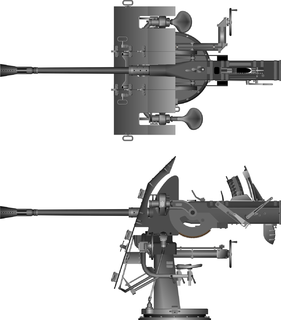 W
WThe 3.7 cm Flak M42 was the marine version of the 3.7-centimetre (1.5 in) Flak 36/37 and used by the Kriegsmarine on surface ships and as the M42U on Type VII and Type IX U-boats. The 3.7 cm Flak M42U used several types of mounts and entered service in autumn 1943.
 W
WThe 3.7 cm Infanteriegeschütz M.15 was an Austro-Hungarian cannon developed for use in the trenches during the First World War. The name indicates the caliber in centimeters, the gun's role Infanteriegeschütz which in German means infantry support gun and the model according to the year of introduction. Captured Austrian guns and Italian produced copies were first designated Cannon 37F and later as 37/10 F. Mod. 1915 in the 1930s.
 W
WThe 3,7 cm KPÚV vz. 34 was an anti-tank gun produced by the Škoda Works in Czechoslovakia. Škoda's own designation for it was A3. It is not known if guns seized by Germany after the occupation of Bohemia-Moravia saw service in World War II. Slovakia acquired 113 when it declared independence from Czechoslovakia in March 1939.
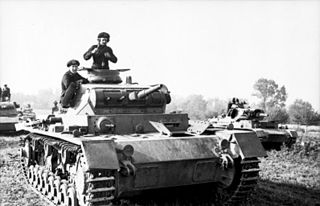 W
WThe 3.7 cm KwK 36 L/45 (3.7 cm Kampfwagenkanone 36 L/45) was a German 3.7 cm cannon used primarily as the main armament of earlier variants of the German Sd.Kfz. 141 Panzerkampfwagen III medium tank. It was used during the Second World War.
 W
WThe Pak 36 is a 3.7cm / 37mm caliber German anti-tank gun used during the Second World War. It was the main anti-tank weapon of Wehrmacht Panzerjäger units until 1942. Developed by Rheinmetall in 1933, it was first issued to the German Army in 1936, with 9,120 being available by the beginning of the war in September 1939 and a further 5,339 produced during the war. As the predominant anti-tank gun design in the world during the late 1930s, demand was high for the Pak 36, with another 6,000 examples produced for export and the design being copied by the Soviet Union as the 45 mm anti-tank gun M1932 (19-K) and by other nations such as Japan.
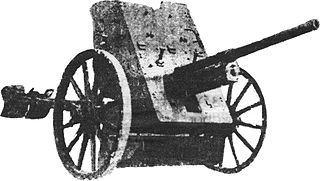 W
W37 mm anti-tank gun model 1930 (1-K) was a Soviet light anti-tank gun used in the first stage of the German-Soviet War.
 W
WThe 37 mm automatic air defense gun M1939 (61-K) is a Soviet 37 mm calibre anti-aircraft gun developed during the late 1930s and used during World War II. The land-based version was replaced in Soviet service by the AZP S-60 during the 1950s. Guns of this type were successfully used throughout the Eastern Front against dive bombers and other low- and medium-altitude targets. It also had some usefulness against lightly armoured ground targets. Crews of the 37 mm AD guns shot down 14,657 Axis planes. The mean quantity of 37 mm ammunition to shoot down one enemy plane was 905 rounds.
 W
WThe 37 mm gun M1 was an anti-aircraft autocannon developed in the United States. It was used by the US Army in World War II.
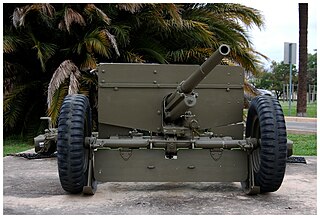 W
WThe 37 mm gun M3 is the first dedicated anti-tank gun fielded by United States forces in numbers. Introduced in 1940, it became the standard anti-tank gun of the U.S. infantry with its size enabling it to be pulled by a jeep. However, the continuing improvement of German tanks quickly rendered the 37 mm ineffective and, by 1943, it was being gradually replaced in the European and Mediterranean theaters by the more powerful British-developed 57 mm gun M1. In the Pacific, where the Japanese tank threat was less significant, the M3 remained in service until the end of the war, but some 57mm guns were issued.
 W
WThe 37 mm McClean Automatic Cannon Mk. III was a light artillery piece produced in the United States during World War I for the Imperial Russian Army.
 W
W37-mm trench gun M1915 was a Russian battalion gun employed in World War I.
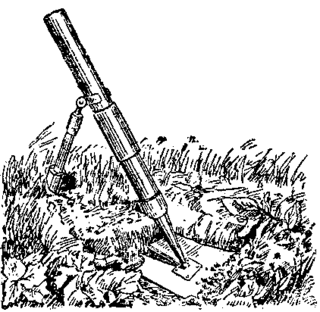 W
WThe 37mm spade mortar is a Soviet 37 mm light infantry mortar used in the Second World War. The mortar was produced from 1939 until the end of 1941.
 W
WThe AC 37 was a French anti-tank gun of 37mm caliber, developed by the Ateliers de Puteaux. It was principally used in the ouvrages and casemates of the Maginot Line in the late 1930s. It was frequently paired with a Jumelage de Mitrailleuses (JM) cupola with twin machine guns.
 W
WThe Bordkanone 3,7 was a German 3.7 cm (1.46 in) anti-tank/bomber autocannon of World War II and based on the earlier 3.7 cm (1.46 in) 3.7 cm Flak 18 made by Rheinmetall.
 W
WThe Bofors 37 mm anti-tank gun was an anti-tank gun designed by Swedish manufacturer Bofors in the early 1930s originally for Swedish use. It was exported to several countries during the 1930s of which several bought licences to produce it themselves. The gun was used in several conflicts but most of its fame comes from its use in the Spanish Civil War and the Winter War where it was used very successfully against light tanks and armored cars among other targets. Beyond its use as an infantry gun it was also used as the main armament in several armored cars and tanks such as the Dutch M39 Pantserwagen and the Polish 7TP to name a few. As the armor of tanks was increased during World War II the gun very quickly became obsolete as an anti-tank gun but was still used effectively as an infantry support gun for the entirety of the war, and well into the Cold War. This was due to its high fire rate, great mobility and effective high explosive shells.
 W
WThe Canon d'Infanterie de 37 modèle 1916 TRP was a French infantry support gun, first used during World War I. TRP stands for tir rapide, Puteaux. The tactical purpose of this gun was the destruction of machine gun nests.
 W
WThe Canon de 37 mm Modèle 1925 was a widely used family of French anti-aircraft guns used by the French Navy during World War II.
 W
WThe flaming onion was a 37 mm Hotchkiss revolving-barrel anti-aircraft gun used by the German army at the beginning of World War I, the name referring to both the gun, and especially the flare or tracer ammunition it fired. The American "balloon-buster" ace, Frank Luke, was a prominent victim of later versions of this device, and it was mentioned in Eddie Rickenbacker's book Fighting the Flying Circus and in many "Biggles" stories. Later in the war the term was also applied to any sort of anti-aircraft fire that used a visible tracer, appearing in reports of combat from the Battle of Taranto, for instance.
 W
WThe Hotchkiss gun can refer to different products of the Hotchkiss arms company starting in the late 19th century. It usually refers to the 1.65-inch (42 mm) light mountain gun; there were also a navy (47 mm) and a 3-inch (76 mm) Hotchkiss guns. The 42 mm gun was intended to be mounted on a light carriage or packed on two mules to accompany a troop of cavalry or an army travelling in rough country.
 W
WThe Nudelman N-37 was a 37 mm (1.46 in) aircraft autocannon used by the Soviet Union. It was designed during World War II by V. Ya. Nemenov of A.E. Nudelman's OKB-16 to replace the earlier Nudelman-Suranov NS-37 and entered service in 1946. It was 30% lighter than its predecessor at the cost of a 23% lower muzzle velocity.
 W
WThe Nudelman-Suranov NS-37 was a 37-millimetre (1.5 in) aircraft cannon, which replaced the unreliable Shpitalny Sh-37 gun. Large caliber was planned to allow destruction of both ground targets and planes.
 W
WThe Puteaux SA 18 was a French single-shot, breech-loading cannon, used in World War I through World War II, primarily mounted on combat vehicles.
 W
WThe QF 1 pounder, universally known as the pom-pom due to the sound of its discharge, was a 37 mm British autocannon, the first of its type in the world. It was used by several countries initially as an infantry gun and later as a light anti-aircraft gun.
 W
WThe T249 Vigilante was a prototype 37 mm self-propelled anti-aircraft gun (SPAAG) designed as a replacement for the Bofors 40 mm gun and M42 Duster in US Army service. The system consisted of a 37 mm T250 six-barrel Gatling gun mounted on a lengthened M113 armored personnel carrier platform.
 W
WThe Type 1 37 mm anti-tank gun was an anti-tank gun developed by the Imperial Japanese Army, and used in combat during World War II. The Type 1 number was designated for the year the gun was accepted, 2601 in the Japanese imperial year calendar, or 1941 in the Gregorian calendar.
 W
WThe Type 11 37 mm infantry support gun was an infantry support gun used by the Imperial Japanese Army in the Second Sino-Japanese War and World War II. The Type 11 designation was given to this gun as it was accepted in the 11th year of Emperor Taishō's reign (1922).
 W
WThe Type 63 and Type 65 are Chinese self-propelled anti-aircraft gun based on the Soviet T-34/76 or T-34/85 medium tank chassis.
 W
WThe Type 94 37 mm quick-firing gun was an anti-tank gun developed by the Imperial Japanese Army. It was used in combat during the Second Sino-Japanese War and World War II. The Type 94's number was designated for the year the gun was accepted, 2594 in the Japanese imperial year calendar, or 1934 in the Gregorian calendar.
 W
WZSU-37 was a Soviet-made, light, self-propelled anti-aircraft gun (SPAAG), developed by the end of 1943 and produced at Works No. 40 in Mytishchi. It was the first Soviet series-produced tracked SPAAG. ZSU stands for Zenitnaya Samokhodnaya Ustanovka, meaning "anti-aircraft self-propelled mount".